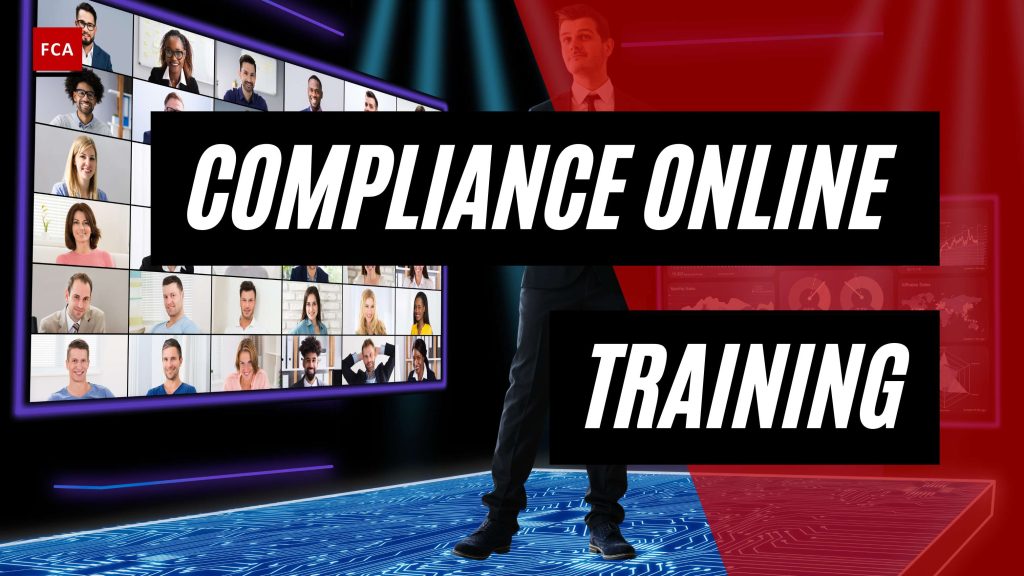Understanding AML Training
As the regulations governing Anti-Money Laundering (AML) continue to evolve and intensify, the importance of effective AML training has never been greater. Here, we delve into the importance of AML training and the key components that make an AML training program effective.
Importance of AML Training
AML training plays a critical role in ensuring that employees understand their responsibilities in detecting, preventing, and reporting potential money laundering activities. It is an integral part of an organization’s overall AML compliance program, helping to safeguard the organization from legal, operational, and reputational risks associated with money laundering and terrorist financing.
Training equips employees with the knowledge and skills needed to recognize red flags, conduct customer due diligence, and comply with reporting requirements. Additionally, regular assessments of AML training effectiveness can help identify gaps or weaknesses in the program, ensuring that employees remain updated on the latest AML regulations and best practices (FasterCapital).
Components of Effective AML Training
A comprehensive AML compliance program should include the following components:
- Develop a written training program: Training should be role-specific and conducted frequently to ensure team members can recognize and report unusual activities.
- Perform and document a risk analysis: PCMLTFA regulations require a risk-based approach to understanding and mitigating organizational risks across all products, services, and business lines.
- Appoint a compliance officer: This individual is responsible for developing policies, procedures, training, and implementing necessary tools (CPA Canada).
- Review, maintain, and monitor: An AML/ATF compliance program must be reviewed every two years to ensure effectiveness, with the possibility of employing sophisticated tools such as machine learning and data-analytics tools for ongoing monitoring.
- Follow the reporting regime: In addition to maintaining a compliance program, organizations must follow a specific reporting regime covering various transactions like suspicious transactions, large cash transactions, electronic funds transfers, and more.
Moreover, the training program should be tailored to the specific roles and responsibilities of each employee. For example, front-line employees should receive training on recognizing red flags and conducting customer due diligence, while compliance or risk management employees may need advanced training on regulatory requirements and risk assessment techniques.
Interactive training methods such as case studies, role-playing exercises, or online simulations can enhance employees’ engagement and understanding of complex AML concepts. Regular training sessions, newsletters, or online resources can be used to keep employees informed about regulatory changes, emerging risks, and industry trends.
Lastly, benchmarking AML training programs against industry best practices and collaborating with other firms can enhance the effectiveness of AML training. Participating in industry forums, conferences, or working groups dedicated to AML provides valuable opportunities to stay abreast of emerging trends and regulatory expectations, ultimately strengthening defenses against financial crime (FasterCapital).
The Rise of Online AML Training
As the landscape of Anti-Money Laundering (AML) evolves, so do the methods of training. One particular method, online training, is gaining momentum for its numerous benefits and effectiveness. In this section, we will delve into these aspects of ‘aml training online’.
Benefits of Online AML Training
Online AML training offers numerous advantages over traditional in-person methods. The most significant benefit is cost-effectiveness. According to Continu, e-learning is less expensive than traditional classroom instruction, with significant cost reductions in training facilities, travel expenses, and time spent away from work.
Another advantage of online AML training is flexibility. With online training, professionals can participate in the course at their own pace and convenience, accommodating different learning styles, preferences, and schedules.
Moreover, online AML training offers a wealth of resources at the learner’s disposal. These can include AML training materials, AML training videos, and even opportunities for AML training certification.
The rise of online learning is evident in the numbers. In 2019, 59% of learning and development professionals allocated more of their budget to online training compared to three years prior, with over a third reducing investment in instructor-led training. By 2026, the corporate online learning industry is projected to grow by over 250%, reaching almost $50 billion.
Effectiveness of Online vs In-Person Training
Despite the shift towards online learning, there may be concerns about its effectiveness compared to traditional in-person training. However, research suggests that online training is perceived to be just as effective, if not more so, than face-to-face, instructor-led training across various industries and disciplines.
In the context of AML training, the effectiveness of the training is often measured by assessments. These are typically conducted in a classroom or online setting, with a pass mark of over 85%. However, it’s important to note that completing this mandatory training often occurs just a few days before the deadline, which may not be conducive to effective learning about such a critical banking issue.
For effective AML training, the consensus is that passing the assessment is one goal, but creating a conducive learning environment where the content is retained is equally important. Suggestions include sharing account opening best practices in a fun, creative, peer-to-peer environment with recognition and reward, alongside assessment-based training.
Considering the growing size of criminal activities, online AML training is increasingly becoming a necessity for proactive measures to combat money laundering and related criminal activities effectively.
The effectiveness of online AML training, coupled with its advantages, makes it an essential tool for organizations. However, it’s important to understand that online AML training should be part of a broader AML training program that includes various methods to accommodate different learning preferences and effectively combat money laundering.
Implementing AML Training in Organizations
To maintain a robust anti-money laundering (AML) program, organizations must not only understand the importance of AML training but also implement it effectively within their operations. This involves considering role-specific AML training and employing interactive training methods.
Role-Specific AML Training
The first step in establishing an AML compliance program is appointing an individual, such as a chief AML officer, responsible for developing policies, procedures, training, and implementing necessary tools. Tailoring the AML training program to the specific roles and responsibilities of each employee is crucial for its effectiveness.
For instance, front-line employees should receive training on recognizing red flags and conducting customer due diligence. On the other hand, employees in compliance or risk management roles may require advanced training on regulatory requirements and risk assessment techniques. Such role-specific training ensures that all team members can recognize and report unusual activities in their respective areas of operation.
To learn more about the specific AML training requirements for different roles, check out our resource on aml training requirements.
Utilizing Interactive Training Methods
Traditional training methods may not always be effective in conveying complex AML concepts. Instead, organizations should consider utilizing interactive training methods to enhance employee engagement and understanding.
For instance, methods such as case studies, role-playing exercises, or online simulations can make the learning process more engaging. Simulated scenarios, where employees make decisions on handling suspicious transactions, can provide practical experience in identifying and reporting potential money laundering activities.
Such interactive methods can be incorporated into online training platforms, making them accessible and convenient for employees. By doing so, organizations can ensure that their employees not only understand the theoretical aspects of AML compliance but also have the practical skills to apply them in real situations.
For additional resources on implementing effective AML training in your organization, check out our articles on aml compliance training and aml training for employees.
Assessing AML Training Effectiveness
Once an AML training program has been implemented, it’s crucial to evaluate its effectiveness to ensure it’s meeting its intended objectives. This can be achieved through regular assessments and audits, as well as benchmarking against industry best practices.
Regular Assessments and Audits
Conducting regular assessments of AML training effectiveness is essential for organizations to identify any gaps or weaknesses in the program. Various methods such as surveys, quizzes, or simulated scenarios can be used to gauge employees’ understanding of AML policies and procedures. For instance, an increase in the number of suspicious activity reports (SARs) by employees may indicate better training effectiveness.
Tailoring the AML training to the specific roles and responsibilities of each employee is also crucial. For example, front-line employees should receive training on recognizing red flags and conducting customer due diligence, while compliance or risk management employees may need advanced training on regulatory requirements and risk assessment techniques.
Another effective method of assessing AML training is through the use of interactive training methods such as case studies, role-playing exercises, or online simulations. These methods can enhance employees’ engagement and understanding of complex AML concepts, providing practical experience in identifying and reporting potential money laundering activities.
Benchmarking Against Best Practices
Benchmarking AML training programs against industry best practices and collaborating with other firms can enhance the effectiveness of AML training by learning from peers’ insights and experiences. Participating in industry forums, conferences, or working groups dedicated to AML provides valuable opportunities to stay abreast of emerging trends and regulatory expectations.
When assessing the effectiveness of an AML program, there must be a management commitment that establishes a tone at the top, permeating all levels of the organization. Compliance resources should be sufficient in quantity and skill levels, with autonomy in fact and appearance (Finscan).
Data quality and handling are critical components of an effective AML program, as compliance professionals rely heavily on data to measure and monitor risks. It is essential to establish a standard unit of measure to monitor risk and make appropriate decisions.
A comprehensive AML compliance program should include five pillars: a system of internal controls, a designated person for day-to-day operations oversight, training, customer due diligence, and independent testing. Financial institutions often struggle with meeting these regulatory requirements and expectations.
Technology and ongoing assessment play a crucial role in an effective AML program, helping organizations assess whether current technology aids in mitigating risk or adds more risk due to lack of functionality or performance. Regular technology “health checks” are essential to keep the compliance program on track (Finscan).
A survey of compliance practitioners revealed that 27% of respondents identified “training” as one of the areas with the largest gap in their compliance programs, highlighting the importance of effective training for AML programs (Finscan).
By continuously assessing and enhancing the effectiveness of your AML training program, you can ensure that your organization remains compliant with AML regulations and is well-equipped to combat money laundering and financial crime.
Case Study: LIMRA’s AML Program
As we explore different avenues for effective AML training for employees, it’s beneficial to study successful implementations of such programs. One such instance is the Anti-Money Laundering (AML) program by LIMRA.
Overview of LIMRA’s AML Program
The LIMRA AML program is widely recognized within the industry for enabling companies to comply with anti-money laundering training and regulatory tracking requirements. This program offers AML courses in both English and Spanish, and refreshes the course material annually, keeping the content up to date and relevant.
LIMRA’s U.S. Anti-Money Laundering Training Program offers a fast, easy, and cost-effective way for financial services companies to meet the key requirements of U.S. Treasury Department rules. Once producers complete the core training, documentation is automatically sent to every carrier they represent within the program.
Key Features and Benefits
The LIMRA AML program encompasses a range of features designed to enhance the learning experience and facilitate compliance with regulatory requirements. The 2024 AML Refresher Course focuses on a variety of crucial topics, including recognizing compromised identities, developing controls to protect customers, identifying high-risk activities, understanding suspicious activities, and the use of Suspicious Activity Report (SAR).
Additionally, the program includes an AML Resource Library that is accessible 24/7, enabling learners to review content when needed. A customized company page aids carriers in meeting regulatory requirements.
LIMRA’s AML training offers completion certificates for home office staff and tracks completion activity with a digital tracker. The course content, created annually, addresses relevant issues for both home office and producer staff, utilizing real-life industry examples to prepare employees (LIMRA).
The LIMRA AML program exemplifies an effective application of aml training online, demonstrating the potential benefits and impact of such a program on an organization’s AML compliance efforts. By reviewing and learning from such case studies, organizations can gain valuable insights to enhance their own AML training and compliance programs.
The Future of AML Training
As the landscape of Anti-Money Laundering (AML) continues to evolve, so does the approach to AML training. The future of AML training lies in the adoption of a blended learning approach and leveraging technological advancements for more effective training.
Blended Learning Approach
A blended learning approach, which combines online and instructor-led training, offers a promising solution for AML training. This approach has been found to enhance workplace engagement, cognitive engagement, and emotional engagement compared to learning methods without human interaction.
Interactive training methods such as case studies, role-playing exercises, or online simulations can enhance employees’ engagement and understanding of complex AML concepts. For instance, developing simulated scenarios where employees make decisions on handling suspicious transactions can provide practical experience in identifying and reporting potential money laundering activities.
Moreover, comprehensive AML compliance programs should include a system of internal controls, a designated person for day-to-day operations oversight, training, customer due diligence, and independent testing (Finscan). Blended learning could play a pivotal role in managing these requirements effectively, offering a combination of online AML training and in-person AML training seminars for a more holistic learning experience.
Technological Advancements in AML Training
Technological advancements are reshaping the future of AML training. Technologies are being implemented to ensure the effectiveness of AML training, assess whether current technology aids in mitigating risk or adds more risk due to lack of functionality or performance. Regular technology “health checks” are essential to keep the compliance program on track (Finscan).
Benchmarking AML training programs against industry best practices and collaborating with other firms can enhance the effectiveness of AML training by learning from peers’ insights and experiences (FasterCapital). Furthermore, participating in industry forums, conferences, or working groups dedicated to AML provides valuable opportunities to stay abreast of emerging trends and regulatory expectations, ultimately strengthening defenses against financial crime.
Technological advancements also allow for a wide range of AML training materials, such as AML training videos, and improved methods for AML training certification. This not only enhances the learning experience but also allows for better tracking and reporting of AML training compliance.
In conclusion, the future of AML training lies in leveraging a blended learning approach and technological advancements. By doing so, organizations can ensure that their AML training programs are not only compliant with AML training requirements but also effective in equipping their employees with the necessary skills and knowledge to combat money laundering.








